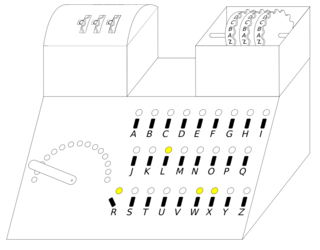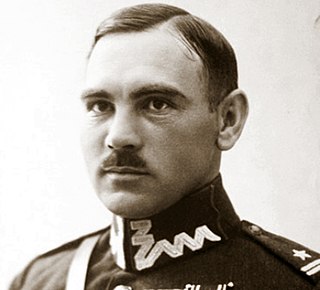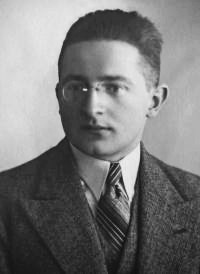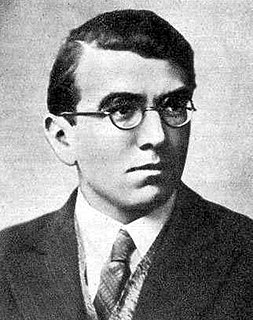 W
WMaksymilian Ciężki was the head of the Polish Cipher Bureau's German section (BS–4) in the 1930s, during which time—from December 1932—the Bureau decrypted German Enigma messages.
 W
WThe cyclometer was a cryptologic device designed, "probably in 1934 or 1935," by Marian Rejewski of the Polish Cipher Bureau's German section (BS-4) to facilitate decryption of German Enigma ciphertext.
 W
WKabaty [kaˈbatɨ] (listen) is a residential neighborhood in Ursynów, the southernmost district of Warsaw. Sparsely populated until the late 1980s, Kabaty witnessed rapid growth in the 1990s and especially the 2000s. It is located near the Kabaty Woods, a popular weekend destination for Warsaw citizens.
 W
WLt. Col. Jan Kowalewski was a Polish cryptologist, intelligence officer, engineer, journalist, military commander, and creator and first head of the Polish Cipher Bureau. He recruited a large staff of cryptologists who broke Soviet military codes and ciphers during the Polish-Soviet War, enabling Poland to weather the war and achieve victory in the 1920 Battle of Warsaw.
 W
WLt. Col. Karol Gwido Langer was, from at least mid-1931, chief of the Polish General Staff's Cipher Bureau, which from December 1932 decrypted Germany's military Enigma-machine ciphers. Poland's prewar achievements paved the way for Britain's World War II Ultra secret.
 W
WStanisław Leśniewski was a Polish mathematician, philosopher and logician.
 W
WStefan Mazurkiewicz was a Polish mathematician who worked in mathematical analysis, topology, and probability. He was a student of Wacław Sierpiński and a member of the Polish Academy of Learning (PAU). His students included Karol Borsuk, Bronisław Knaster, Kazimierz Kuratowski, Stanisław Saks, and Antoni Zygmund. For a time Mazurkiewicz was a professor at the University of Paris; however, he spent most of his career as a professor at the University of Warsaw.
 W
WAntoni Palluth, was a founder of the AVA Radio Company. The company built communications equipment for the Polish military; the work included not only radios but also cryptographic equipment. Palluth was involved with the German section (BS-4) of the Polish General Staff's interbellum Cipher Bureau. He helped teach courses on cryptanalysis, and he was involved with building equipment to break the German Enigma machine.
 W
WMajor Franciszek Pokorny was a Polish Army officer who, after World War I, headed the Polish General Staff's Cipher Bureau before Major Gwido Langer.
 W
WPyry [ˈpɨrɨ] (listen) is one of the southernmost neighborhoods of the city of Warsaw. Administratively part of the Ursynów district, it was originally a separate village located along ulica Puławska, which links Warsaw with the town of Piaseczno. To the east, Pyry borders on the Kabaty Woods.
 W
WMarian Adam Rejewski was a Polish mathematician and cryptologist who in late 1932 reconstructed the sight-unseen German military Enigma cipher machine, aided by limited documents obtained by French military intelligence. Over the next nearly seven years, Rejewski and fellow mathematician-cryptologists Jerzy Różycki and Henryk Zygalski developed and used techniques and equipment to decrypt the German machine ciphers, even as the Germans introduced modifications to their equipment and encryption procedures. Five weeks before the outbreak of World War II the Poles, at a conference in Warsaw, shared their achievements with the French and British, thus enabling Britain to begin reading German Enigma-encrypted messages, seven years after Rejewski's original reconstruction of the machine. The intelligence that was gained by the British from Enigma decrypts formed part of what was code-named Ultra and contributed—perhaps decisively—to the defeat of Germany.
 W
WJerzy Witold Różycki was a Polish mathematician and cryptologist who worked at breaking German Enigma-machine ciphers before and during World War II.
 W
WWacław Franciszek Sierpiński was a Polish mathematician. He was known for contributions to set theory, number theory, theory of functions and topology. He published over 700 papers and 50 books.
 W
WThe method of Zygalski sheets was a cryptologic technique used by the Polish Cipher Bureau before and during World War II, and during the war also by British cryptologists at Bletchley Park, to decrypt messages enciphered on German Enigma machines.
 W
WHenryk Zygalski was a Polish mathematician and cryptologist who worked at breaking German Enigma ciphers before and during World War II.